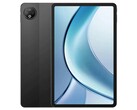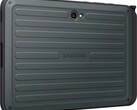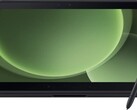Xiaomi Pad 7 Ultra verdict
Xiaomi's new SoC debut is quite impressive, and when you consider Google's efforts with its Tensor chips, a debut at the level of the Snapdragon 8 Elite wasn't necessarily expected. This makes the Pad 7 Ultra significantly faster than the Galaxy Tab S10 Ultra. But even beyond the XRing O1, Xiaomi's flagship tablet has no reason to hide from its Samsung and Apple counterparts - quite the opposite.
The Pad 7 Ultra is excellently crafted and weighs less than the iPad Air 13, despite having a larger display and higher battery capacity. Speaking of battery life, the Xiaomi tablet also impresses right across the board. While the 14-inch OLED panel didn't reach its advertized peak brightness in our test, the brightness is still extremely competitive. Combined with strong calibration and high-frequency PWM dimming, there are hardly any grounds for criticism when it comes to the screen.
For a premium device, update availability is a key consideration, but the lack of information from Xiaomi raises some questions about the Pad 7 Ultra. The lack of 5G and GNSS options, as well as limited availability outside of China, are also key drawbacks that must be considered.
Pros
Cons
Price and availability
The Pad 7 Ultra has launched in China with the base model featuring 12 GB of LPDDR5T RAM and 256 GB of UFS 4.1 storage for 5,699 yuan (approximately $795). The top model (16 GB, 1 TB storage) costs 7,399 yuan (approximately $1,030). At Trading Shenzhen, import prices start at around $1,010. Details regarding a possible international launch are still pending.
Table of Contents
- Xiaomi Pad 7 Ultra verdict
- Xiaomi Pad 7 Ultra specifications
- Case - An Android tablet with slim bezels
- Features - The Xiaomi Pad 7 Ultra uses USB 3.2
- Software - The Xiaomi tablet comes with Android 15
- Communication and GNSS - The Android tablet lacks 5G
- Cameras - The Xiaomi Pad 7 Ultra uses Samsung sensors
- Accessories and warranty - This Android tablet comes with a charger
- Input devices and operation - The Xiaomi tablet packs a fingerprint sensor
- Display - The XXL tablet uses an OLED panel
- Performance - The Android tablet comes with a Xiaomi SoC
- Games - The Xiaomi Pad uses ray tracing
- Emissions - The Android tablet stays very cool
- Battery runtimes - The Xiaomi Pad 7 Ultra has 120-watt charging
- Notebookcheck overall rating
- Possible alternatives compared
Together with the 15S Pro smartphone, Xiaomi has unveiled its new flagship tablet, the Pad 7 Ultra. The premium tablet features the company's new XRing O1 chipset, with which the Chinese manufacturer aims to compete in the high-end league. This positions Xiaomi's Ultra model as a direct competitor to the Samsung Galaxy Tab S10 Ultra or the Apple iPad Pro 13.
Paired with an aluminum keyboard cover and the separately available stylus, the Pad 7 Ultra is designed to be a fully-fledged laptop replacement. HyperOS 2 also offers new multitasking optimizations.
Xiaomi Pad 7 Ultra specifications
Case - An Android tablet with slim bezels
The Xiaomi Pad 7 Ultra impresses with its premium appearance and a high-quality material mix of metal and glass. The frame is made of an aluminum alloy, which lends the XXL tablet a certain robustness. However, there is no IP rating, which means the case is neither waterproof nor dustproof.
The display is protected by Gorilla Glass 5, which ensures high durability, and a version with a Nano Soft coating is also available. The surface structure is etched to reduce reflections and provide a paper-like writing feel. However, our review sample does not have this anti-reflective coating.
With a high screen-to-body ratio of 92 percent, the Xiaomi tablet feels very modern, thanks in no small part to the well-functioning palm rest. The extremely narrow display bezel measures only about 4 millimeters. While the use of a notch is somewhat controversial, it enables efficient use of space without the need for wide bezels around the display. On top is a magnetic contact surface that allows charging and pairing of the Xiaomi Focus Pen.
The Xiaomi Pad 7 Ultra is very slim, which is also reflected in its weight: At just 609 grams, the 14-inch tablet is impressively lightweight, compared to the 100-gram heavier Galaxy Tab S10 Ultra.
Features - The Xiaomi Pad 7 Ultra uses USB 3.2
The Pad 7 Ultra comes with a fast USB 3.2 (2nd gen) port, enabling a maximum data transfer speed of 10 Gbps. This port also supports wired video output. Users can also use the Xiaomi tablet as a remote control via the infrared port, allowing the Pad 7 Ultra to function as a control center for TVs and other devices.
The built-in NFC chip allows files and photos to be transferred between the tablet and Xiaomi phones. Wireless data transfer to Apple products is also available. Furthermore, the Pad 7 Ultra can be used as a second screen for Windows or macOS devices via Miracast.
The metal contacts on the rear serve as a connection element for an optional keyboard cover. However, it should be noted that even with this port, memory expansion via microSD cards is not possible. USB OTG can be used for other external storage devices.
Software - The Xiaomi tablet comes with Android 15
The Pad 7 Ultra ships with Android 15, on top of which the manufacturer runs its own HyperOS 2.0 user interface. At the time of testing, the security patches were up to date (as of April 2025), but there's no official word on how long the premium tablet will receive updates.
HyperOS 2 features a desktop-like system interface and the company's proprietary AI, which is barely usable in German-speaking countries. Google's Circle to Search, as found on global devices, is missing. Google services are also not supported out of the box, although the Google Frameworks are already pre-installed. This allows the Play Store to be installed manually via the company's own app store. However, in addition to Chinese and English, no German language pack can be selected.
Sustainability
Xiaomi hasn't provided precise information concerning the materials used and their recycling rates, but the manufacturer does offer general guidance: It is committed to increasing the use of recycled materials. The use of bio-based high-polymer materials and recycled plastics is also intended to minimize the ecological footprint.
The packaging appears to be plastic-free, and the device itself is wrapped in paper. The rest of the packaging is made of cardboard.
Communication and GNSS - The Android tablet lacks 5G
In a home network environment, the Pad 7 Ultra uses the fast WiFi 7 standard, but only the 2.4 and 5 GHz bands are used to establish a connection. With our WiFi 6E router, we still achieved impressive transfer speeds of over 1,500 Mbps without the 6 GHz band. Overall, communication with the Asus ROG Rapture GT-AXE11000 is somewhat inconsistent in terms of speed.
As already seen with the Pad 7 and Pad 7 Pro, it is somewhat disappointing that Xiaomi's premium tablet does not offer the option to use mobile data or to locate the device via satellite systems.
| Networking | |
| Xiaomi Pad 7 Ultra | |
| iperf3 transmit AXE11000 | |
| iperf3 receive AXE11000 | |
| Samsung Galaxy Tab S10 Ultra | |
| iperf3 transmit AXE11000 | |
| iperf3 receive AXE11000 | |
| iperf3 transmit AXE11000 6GHz | |
| iperf3 receive AXE11000 6GHz | |
| Oppo Pad 4 Pro | |
| iperf3 transmit AXE11000 | |
| iperf3 receive AXE11000 | |
| Lenovo Yoga Tab Plus | |
| iperf3 transmit AXE11000 6GHz | |
| iperf3 receive AXE11000 6GHz | |
| Apple iPad Air 13 2025 | |
| iperf3 transmit AXE11000 6GHz | |
| iperf3 receive AXE11000 6GHz | |
| Global Average -3 | |
| iperf3 transmit AXE11000 | |
| iperf3 receive AXE11000 | |
| iperf3 transmit AXE11000 6GHz | |
| iperf3 receive AXE11000 6GHz | |
| Average of class Tablet | |
| iperf3 transmit AXE11000 | |
| iperf3 receive AXE11000 | |
| iperf3 transmit AXE11000 6GHz | |
| iperf3 receive AXE11000 6GHz | |
Cameras - The Xiaomi Pad 7 Ultra uses Samsung sensors
On the front of the device, Xiaomi has equipped its high-end tablet with a 32 MP ultra-wide-angle lens. The Omnivision (OV32D) sensor uses pixel fusion and is limited to 1080p recordings. The Pad 7 Ultra's 32 MP images are rock-solid with a decent level of detail. On the rear, there's a 50 MP autofocus sensor. The Samsung JN1 supports 4K60 video and produces good photos with a quality that's surprisingly competitive with flagship phones such as the iPhone 16 Pro, and attractively calibrated color reproduction.
Digitizing notes or documents is very easy with the Xiaomi tablet. Due to the sheer size of the Pad 7 Ultra, hardly anyone will want to use the ƒ/1.8 aperture for another purpose.
Image comparison
Choose a scene and navigate within the first image. One click changes the position on touchscreens. One click on the zoomed-in image opens the original in a new window. The first image shows the scaled photograph of the test device.
Main cameraMain cameraLow light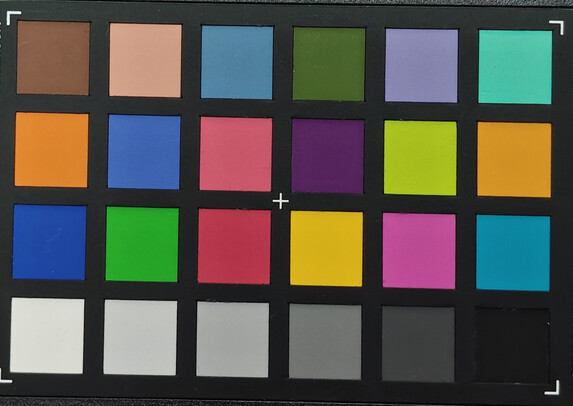

Accessories and warranty - This Android tablet comes with a charger
The package includes a 120-watt fast-charging power adapter, a data/charging cable (USB-A to USB-C), and a quick start guide. Our lender, Trading Shenzhen, also extends the scope of delivery of our Chinese version with an EU adapter for the charger and a USB OTG adapter. Optional extras for the Pad 7 Ultra include the Focus Pen (around $100) as well as a keyboard cover.
Our import device comes with a 12-month warranty. In the event of a warranty claim, Trading Shenzhen offers the option of sending the smartphone to a German shipping address.
Input devices and operation - The Xiaomi tablet packs a fingerprint sensor
The Pad 7 Ultra's capacitive multi-touchscreen is very precise in all areas. Inputs are processed without delay with a sampling rate of up to 1,600 Hz. However, 240 Hz is used for finger touches by default.
As well as finger-based operation, you can also use the 15-gram Xiaomi Focus Pen, which offers 8,192 pressure levels. The refresh rate of up to 120 Hz ensures images move smoothly, even with the 3K resolution. It's worth noting that Xiaomi has installed a vibration motor (Z-axis) on its Ultra model.
The 3:2 format used is closer to a classic paper format than the 16:10 of a tablet such as the Galaxy Tab S10 Ultra, making it better for reading e-books or PDF files. The higher aspect ratio also allows for more content to be displayed in the browser, thanks to the added vertical space.
An active fingerprint sensor is located in the power button, which is positioned on the left-hand side of the tablet. The sensor area is easily accessible with your index finger. Unlocking is reliable and fast. 2D facial recognition is also possible via the front camera.
Display - The XXL tablet uses an OLED panel
The display's technical specifications are excellent. The 2,136p panel has a 14-inch diagonal, giving the Pad 7 Ultra a satisfactory pixel density of 275 PPI, although this falls short of the magic 300 PPI limit. The refresh rate operates at 60 and 120 Hz. We would have preferred an AMOLED with LTPO technology, but panel manufacturers Samsung and others probably don't offer that in this size yet.
In terms of brightness, Xiaomi promises up to 1,600 nits, but this was not achieved in our test. With a full-screen white display, we measured 566 cd/m². The peak brightness with a reduced white area (APL18) was 802 cd/m², although there is typically some room for improvement with OLEDs when playing HDR videos.
In contrast to the Oppo Pad 4 Pro, which uses LCD technology, the Pad 7 Ultra suffers from PWM. However, the implemented PWM dimming operates at an extremely high frequency of 4,800 Hz according to the manufacturer. This makes the Xiaomi tablet more suitable for people sensitive to such issues than the Galaxy Tab S10 Ultra. We measured a baseline flicker of 120 Hz.
| |||||||||||||||||||||||||
Brightness Distribution: 89 %
Center on Battery: 566 cd/m²
Contrast: ∞:1 (Black: 0 cd/m²)
ΔE ColorChecker Calman: 0.91 | ∀{0.5-29.43 Ø4.79}
ΔE Greyscale Calman: 1.4 | ∀{0.09-98 Ø5}
99.7% sRGB (Calman 2D)
Gamma: 2.251
CCT: 6703 K
| Xiaomi Pad 7 Ultra AMOLED, 3200x2136, 14" | Samsung Galaxy Tab S10 Ultra AMOLED 2X, 2960x1848, 14.6" | Oppo Pad 4 Pro LTPS LCD, 3392x2400, 13.2" | Lenovo Yoga Tab Plus IPS, 2944x1840, 12.7" | Apple iPad Air 13 2025 IPS, 2732x2048, 12.9" | |
|---|---|---|---|---|---|
| Screen | -69% | -78% | -106% | -39% | |
| Brightness middle (cd/m²) | 566 | 605 7% | 672 19% | 726 28% | 607 7% |
| Brightness (cd/m²) | 540 | 603 12% | 652 21% | 691 28% | 576 7% |
| Brightness Distribution (%) | 89 | 98 10% | 93 4% | 91 2% | 87 -2% |
| Black Level * (cd/m²) | 0.46 | 0.55 | 0.5 | ||
| Colorchecker dE 2000 * | 0.91 | 2.6 -186% | 3.18 -249% | 4.67 -413% | 1.52 -67% |
| Colorchecker dE 2000 max. * | 1.59 | 5.4 -240% | 4.84 -204% | 5.6 -252% | 3.5 -120% |
| Greyscale dE 2000 * | 1.4 | 1.6 -14% | 2.2 -57% | 1.8 -29% | 2.2 -57% |
| Gamma | 2.251 98% | 2.08 106% | 2.396 92% | 2.249 98% | 2.197 100% |
| CCT | 6703 97% | 6405 101% | 7070 92% | 6382 102% | 6929 94% |
| Contrast (:1) | 1461 | 1320 | 1214 |
* ... smaller is better
Screen Flickering / PWM (Pulse-Width Modulation)
| Screen flickering / PWM detected | 119.8 Hz Amplitude: 30 % | ||
The display backlight flickers at 119.8 Hz (worst case, e.g., utilizing PWM) . The frequency of 119.8 Hz is very low, so the flickering may cause eyestrain and headaches after extended use. In comparison: 53 % of all tested devices do not use PWM to dim the display. If PWM was detected, an average of 8152 (minimum: 5 - maximum: 343500) Hz was measured. | |||
A series of measurements with fixed zoom levels and different brightness settings (The amplitude curve at minimum brightness appears flat, but this is due to the scaling. The info box shows the enlarged version of the amplitude at minimum brightness.)
The 12-bit panel offers HDR 10+, HDR Vivid, and even Dolby Vision, and also comes with triple certification from TÜV Rheinland.
The color display settings are also extensive. In addition to various color profiles, the color temperature and color space can also be adjusted. We achieved the most accurate color reproduction with the Original Pro profile. Here, there are virtually no discernible differences from the reference colors.
Display Response Times
| ↔ Response Time Black to White | ||
|---|---|---|
| 2.6 ms ... rise ↗ and fall ↘ combined | ↗ 1.1 ms rise | |
| ↘ 1.5 ms fall | ||
| The screen shows very fast response rates in our tests and should be very well suited for fast-paced gaming. In comparison, all tested devices range from 0.1 (minimum) to 240 (maximum) ms. » 12 % of all devices are better. This means that the measured response time is better than the average of all tested devices (20.3 ms). | ||
| ↔ Response Time 50% Grey to 80% Grey | ||
| 2.9 ms ... rise ↗ and fall ↘ combined | ↗ 1.5 ms rise | |
| ↘ 1.4 ms fall | ||
| The screen shows very fast response rates in our tests and should be very well suited for fast-paced gaming. In comparison, all tested devices range from 0.165 (minimum) to 636 (maximum) ms. » 11 % of all devices are better. This means that the measured response time is better than the average of all tested devices (31.7 ms). | ||
Outdoors, Xiaomi's Ultra model performs very well. Anyone purchasing the anti-reflective display glass won't have any issues with reflections. Otherwise, the brightness offered by our version with its glossy screen is somewhat limited.
We didn't notice any color changes at wide viewing angles, and the viewing angle stability is very good overall.
Performance - The Android tablet comes with a Xiaomi SoC
The SoC installed in the Pad 7 Ultra is an exciting 3 nm ARM chip with a total of 10 processor cores, led by two Cortex X925 Prime units (clock speed: 3.7 GHz). XRing O1 delivers significantly better values in single-core than the Dimensity 9400. This is not surprising, since MediaTek only uses a Cortex X925 core.
Xiaomi's debut is quite remarkable given Google's efforts with its Tensor SoCs. Compared to the Snapdragon 8 Elite, the XRing O1 is not only on par with the Geekbench CPU tests, but also with the AI tests - an area in which the Dimensity 9400 performs better.
| CrossMark - Overall | |
| Xiaomi Pad 7 Ultra | |
| Average Xiaomi Xring O1 (1873 - 2276, n=3) | |
| Lenovo Yoga Tab Plus | |
| Samsung Galaxy Tab S10 Ultra | |
| Oppo Pad 4 Pro | |
| Average of class Tablet (227 - 2155, n=59, last 2 years) | |
| UL Procyon AI Inference for Android - Overall Score NNAPI | |
| Samsung Galaxy Tab S10 Ultra | |
| Xiaomi Pad 7 Ultra | |
| Average Xiaomi Xring O1 (19983 - 23087, n=3) | |
| Lenovo Yoga Tab Plus | |
| Oppo Pad 4 Pro | |
| Average of class Tablet (2597 - 76852, n=67, last 2 years) | |
| AImark - Score v3.x | |
| Samsung Galaxy Tab S10 Ultra | |
| Average of class Tablet (138 - 55794, n=57, last 2 years) | |
| Xiaomi Pad 7 Ultra | |
| Average Xiaomi Xring O1 (1934 - 2087, n=3) | |
| Lenovo Yoga Tab Plus | |
| Oppo Pad 4 Pro | |
| Geekbench AI | |
| Quantized TensorFlow NNAPI 1.2 | |
| Xiaomi Pad 7 Ultra | |
| Average Xiaomi Xring O1 (1678 - 1698, n=2) | |
| Average of class Tablet (130 - 4532, n=15, last 2 years) | |
| Lenovo Yoga Tab Plus | |
| Oppo Pad 4 Pro | |
| Half Precision TensorFlow NNAPI 1.2 | |
| Average of class Tablet (84 - 4545, n=15, last 2 years) | |
| Xiaomi Pad 7 Ultra | |
| Average Xiaomi Xring O1 (715 - 762, n=2) | |
| Lenovo Yoga Tab Plus | |
| Oppo Pad 4 Pro | |
| Single Precision TensorFlow NNAPI 1.2 | |
| Xiaomi Pad 7 Ultra | |
| Average Xiaomi Xring O1 (722 - 765, n=2) | |
| Lenovo Yoga Tab Plus | |
| Average of class Tablet (85 - 1140, n=15, last 2 years) | |
| Oppo Pad 4 Pro | |
The graphics chip comes in the form of the 16-core Immortalis G925. As the direct comparison with the Dimensity 9400 demonstrates, the XRing 01 is also faster here, thanks to its additional four cores. But, when also compared to the Adreno 830 found in the Oppo Pad 4 Pro, the Pad 7 Ultra is very well positioned. A whopping 55fps in the 4K High Tier test is quite an achievement, and something the upcoming Galaxy Tab S11 Ultra will do well to match.
GFXBench (DX / GLBenchmark) 2.7: T-Rex Onscreen | 1920x1080 T-Rex Offscreen
GFXBench 3.0: on screen Manhattan Onscreen OGL | 1920x1080 1080p Manhattan Offscreen
GFXBench 3.1: on screen Manhattan ES 3.1 Onscreen | 1920x1080 Manhattan ES 3.1 Offscreen
GFXBench: on screen Car Chase Onscreen | 1920x1080 Car Chase Offscreen | on screen Aztec Ruins High Tier Onscreen | 2560x1440 Aztec Ruins High Tier Offscreen | on screen Aztec Ruins Normal Tier Onscreen | 1920x1080 Aztec Ruins Normal Tier Offscreen | 3840x2160 4K Aztec Ruins High Tier Offscreen
| 3DMark / Wild Life Extreme Unlimited | |
| Oppo Pad 4 Pro | |
| Xiaomi Pad 7 Ultra | |
| Samsung Galaxy Tab S10 Ultra | |
| Apple iPad Air 13 2025 | |
| Lenovo Yoga Tab Plus | |
| 3DMark / Wild Life Extreme | |
| Apple iPad Air 13 2025 | |
| Oppo Pad 4 Pro | |
| Xiaomi Pad 7 Ultra | |
| Samsung Galaxy Tab S10 Ultra | |
| Lenovo Yoga Tab Plus | |
| 3DMark / Wild Life Unlimited Score | |
| Oppo Pad 4 Pro | |
| Xiaomi Pad 7 Ultra | |
| Samsung Galaxy Tab S10 Ultra | |
| 3DMark / Solar Bay Score | |
| Oppo Pad 4 Pro | |
| Xiaomi Pad 7 Ultra | |
| Apple iPad Air 13 2025 | |
| Samsung Galaxy Tab S10 Ultra | |
| Lenovo Yoga Tab Plus | |
| 3DMark / Solar Bay Unlimited Score | |
| Oppo Pad 4 Pro | |
| Apple iPad Air 13 2025 | |
| Xiaomi Pad 7 Ultra | |
| Samsung Galaxy Tab S10 Ultra | |
| Lenovo Yoga Tab Plus | |
| 3DMark / Steel Nomad Light Unlimited Score | |
| Oppo Pad 4 Pro | |
| Xiaomi Pad 7 Ultra | |
| Apple iPad Air 13 2025 | |
| Samsung Galaxy Tab S10 Ultra | |
| Lenovo Yoga Tab Plus | |
| 3DMark / Steel Nomad Light Score | |
| Xiaomi Pad 7 Ultra | |
| Oppo Pad 4 Pro | |
| Apple iPad Air 13 2025 | |
| Samsung Galaxy Tab S10 Ultra | |
| Lenovo Yoga Tab Plus | |
| GFXBench (DX / GLBenchmark) 2.7 / T-Rex Onscreen | |
| Samsung Galaxy Tab S10 Ultra | |
| Xiaomi Pad 7 Ultra | |
| Lenovo Yoga Tab Plus | |
| Apple iPad Air 13 2025 | |
| Oppo Pad 4 Pro | |
| GFXBench (DX / GLBenchmark) 2.7 / T-Rex Offscreen | |
| Xiaomi Pad 7 Ultra | |
| Samsung Galaxy Tab S10 Ultra | |
| Oppo Pad 4 Pro | |
| Apple iPad Air 13 2025 | |
| Lenovo Yoga Tab Plus | |
| GFXBench 3.0 / Manhattan Onscreen OGL | |
| Samsung Galaxy Tab S10 Ultra | |
| Xiaomi Pad 7 Ultra | |
| Lenovo Yoga Tab Plus | |
| Apple iPad Air 13 2025 | |
| Oppo Pad 4 Pro | |
| GFXBench 3.0 / 1080p Manhattan Offscreen | |
| Oppo Pad 4 Pro | |
| Xiaomi Pad 7 Ultra | |
| Apple iPad Air 13 2025 | |
| Lenovo Yoga Tab Plus | |
| Samsung Galaxy Tab S10 Ultra | |
| GFXBench 3.1 / Manhattan ES 3.1 Onscreen | |
| Xiaomi Pad 7 Ultra | |
| Samsung Galaxy Tab S10 Ultra | |
| Lenovo Yoga Tab Plus | |
| Apple iPad Air 13 2025 | |
| Oppo Pad 4 Pro | |
| GFXBench 3.1 / Manhattan ES 3.1 Offscreen | |
| Xiaomi Pad 7 Ultra | |
| Oppo Pad 4 Pro | |
| Lenovo Yoga Tab Plus | |
| Samsung Galaxy Tab S10 Ultra | |
| Apple iPad Air 13 2025 | |
| GFXBench / Car Chase Onscreen | |
| Samsung Galaxy Tab S10 Ultra | |
| Xiaomi Pad 7 Ultra | |
| Lenovo Yoga Tab Plus | |
| Apple iPad Air 13 2025 | |
| Oppo Pad 4 Pro | |
| GFXBench / Car Chase Offscreen | |
| Oppo Pad 4 Pro | |
| Xiaomi Pad 7 Ultra | |
| Apple iPad Air 13 2025 | |
| Samsung Galaxy Tab S10 Ultra | |
| Lenovo Yoga Tab Plus | |
| GFXBench / Aztec Ruins High Tier Onscreen | |
| Xiaomi Pad 7 Ultra | |
| Samsung Galaxy Tab S10 Ultra | |
| Lenovo Yoga Tab Plus | |
| Apple iPad Air 13 2025 | |
| Oppo Pad 4 Pro | |
| GFXBench / Aztec Ruins High Tier Offscreen | |
| Xiaomi Pad 7 Ultra | |
| Oppo Pad 4 Pro | |
| Samsung Galaxy Tab S10 Ultra | |
| Apple iPad Air 13 2025 | |
| Lenovo Yoga Tab Plus | |
| GFXBench / Aztec Ruins Normal Tier Onscreen | |
| Xiaomi Pad 7 Ultra | |
| Samsung Galaxy Tab S10 Ultra | |
| Lenovo Yoga Tab Plus | |
| Apple iPad Air 13 2025 | |
| Oppo Pad 4 Pro | |
| GFXBench / Aztec Ruins Normal Tier Offscreen | |
| Xiaomi Pad 7 Ultra | |
| Oppo Pad 4 Pro | |
| Samsung Galaxy Tab S10 Ultra | |
| Apple iPad Air 13 2025 | |
| Lenovo Yoga Tab Plus | |
| GFXBench / 4K Aztec Ruins High Tier Offscreen | |
| Xiaomi Pad 7 Ultra | |
| Oppo Pad 4 Pro | |
| Samsung Galaxy Tab S10 Ultra | |
| Apple iPad Air 13 2025 | |
| Lenovo Yoga Tab Plus | |
In terms of browser performance, the Pad 7 Ultra performs very well but has to admit defeat to the Apple iPad Air 13.
| Jetstream 2 - 2.2 Total Score | |
| Xiaomi Pad 7 Ultra | |
| Average Xiaomi Xring O1 (239 - 265, n=3) | |
| Average of class Tablet (61.3 - 579, n=30, last 2 years) | |
| Speedometer 3 - Score 3.0 | |
| Apple iPad Air 13 2025 (Safari 18) | |
| Lenovo Yoga Tab Plus (Chrome 132) | |
| Xiaomi Pad 7 Ultra (Chrome 137) | |
| Oppo Pad 4 Pro (Chrome 135) | |
| Average Xiaomi Xring O1 (14.5 - 16.9, n=3) | |
| Samsung Galaxy Tab S10 Ultra (Chrome 130) | |
| Average of class Tablet (1.25 - 49.1, n=62, last 2 years) | |
| WebXPRT 4 - Overall | |
| Xiaomi Pad 7 Ultra (Chrome 137) | |
| Samsung Galaxy Tab S10 Ultra (Chrome 130) | |
| Average Xiaomi Xring O1 (182 - 198, n=3) | |
| Oppo Pad 4 Pro (Chrome 135) | |
| Lenovo Yoga Tab Plus (Chrome 132) | |
| Average of class Tablet (26 - 376, n=76, last 2 years) | |
| Octane V2 - Total Score | |
| Apple iPad Air 13 2025 (Safari 18) | |
| Xiaomi Pad 7 Ultra (Chrome 137) | |
| Average Xiaomi Xring O1 (75849 - 81322, n=3) | |
| Samsung Galaxy Tab S10 Ultra (Chrome 130) | |
| Lenovo Yoga Tab Plus (Chrome 132) | |
| Oppo Pad 4 Pro (Chrome 135) | |
| Average of class Tablet (763 - 138481, n=103, last 2 years) | |
| Mozilla Kraken 1.1 - Total | |
| Average of class Tablet (243 - 27101, n=85, last 2 years) | |
| Oppo Pad 4 Pro (Chrome 135) | |
| Samsung Galaxy Tab S10 Ultra (Chrome 130) | |
| Lenovo Yoga Tab Plus (Chrome 132) | |
| Average Xiaomi Xring O1 (502 - 621, n=3) | |
| Xiaomi Pad 7 Ultra (Chrome 137) | |
| Apple iPad Air 13 2025 (Safari 18) | |
* ... smaller is better
With modern UFS 4.1 storage, the Xiaomi tablet is very well positioned, especially when reading and writing small data blocks.
| Xiaomi Pad 7 Ultra | Samsung Galaxy Tab S10 Ultra | Oppo Pad 4 Pro | Lenovo Yoga Tab Plus | Average 256 GB UFS 4.1 Flash | Average of class Tablet | |
|---|---|---|---|---|---|---|
| AndroBench 3-5 | -10% | -19% | -26% | 0% | -56% | |
| Sequential Read 256KB (MB/s) | 3782.3 | 3912.45 3% | 3801.54 1% | 3868 2% | 3782 ? 0% | 1656 ? -56% |
| Sequential Write 256KB (MB/s) | 3098.21 | 2963.58 -4% | 3334.62 8% | 3047.6 -2% | 3098 ? 0% | 1213 ? -61% |
| Random Read 4KB (MB/s) | 445.76 | 342.97 -23% | 297.28 -33% | 241.2 -46% | 446 ? 0% | 235 ? -47% |
| Random Write 4KB (MB/s) | 667.18 | 554.76 -17% | 335.89 -50% | 290.9 -56% | 667 ? 0% | 267 ? -60% |
Games - The Xiaomi Pad uses ray tracing
We used the GameBench application to find out whether the premium tablet and its Immortalis G925 are also suitable for HFR gaming: Demanding games such as Genshin Impact are displayed at a consistent 60fps on the 14-inch 3.2K screen with the highest graphics settings – this is currently the highest possible frame rate for this game on Android.
In PUBG Mobile, however, we only got 60fps, with the shooter's 120fps option not supported by the Xiaomi tablet. However, older games such as Dead Trigger reach the native frame rate, with an average of 120fps.
Emissions - The Android tablet stays very cool
Temperature
Heat production is less of an issue for the Pad 7 Ultra. The case's large surface area means that temperatures are barely noticeable even under load.
This is also a huge advantage in terms of consistency, with the XRing O1 barely throttling the performance in the 3DMark stress tests. A reduction in the frame rate under high load amounts to only about 8 percent, but Xiaomi has also not opted for an additional performance mode for its XXL tablet, unlike the 15S Pro.
(±) The maximum temperature on the upper side is 42.5 °C / 109 F, compared to the average of 33.7 °C / 93 F, ranging from 20.7 to 53.2 °C for the class Tablet.
(±) The bottom heats up to a maximum of 44.5 °C / 112 F, compared to the average of 33.2 °C / 92 F
(+) In idle usage, the average temperature for the upper side is 27.2 °C / 81 F, compared to the device average of 30 °C / 86 F.
3DMark Steel Nomad Stress Test
| 3DMark | |
| Wild Life Stress Test Stability | |
| Lenovo Yoga Tab Plus | |
| Xiaomi Pad 7 Ultra | |
| Oppo Pad 4 Pro | |
| Samsung Galaxy Tab S10 Ultra | |
| Wild Life Extreme Stress Test | |
| Xiaomi Pad 7 Ultra | |
| Apple iPad Air 13 2025 | |
| Oppo Pad 4 Pro | |
| Lenovo Yoga Tab Plus | |
| Samsung Galaxy Tab S10 Ultra | |
| Solar Bay Stress Test Stability | |
| Xiaomi Pad 7 Ultra | |
| Lenovo Yoga Tab Plus | |
| Apple iPad Air 13 2025 | |
| Oppo Pad 4 Pro | |
| Samsung Galaxy Tab S10 Ultra | |
| Steel Nomad Light Stress Test Stability | |
| Xiaomi Pad 7 Ultra | |
| Apple iPad Air 13 2025 | |
| Lenovo Yoga Tab Plus | |
| Oppo Pad 4 Pro | |
| Samsung Galaxy Tab S10 Ultra | |
Speakers
The Pad 7 Ultra features a stereo speaker system located on the sides of the chassis, featuring four woofers and four tweeters. Our measurements show a wave-like frequency response for the mids and highs in the Xiaomi tablet. However, the bass is quite present in the sound mix.
For an audio experience via wireless or wired headphones, the premium Tab uses Bluetooth 5.4 and the USB-C port – a 3.5mm jack is not on board.
Xiaomi Pad 7 Ultra audio analysis
(+) | speakers can play relatively loud (88 dB)
Bass 100 - 315 Hz
(±) | reduced bass - on average 7.1% lower than median
(+) | bass is linear (6% delta to prev. frequency)
Mids 400 - 2000 Hz
(+) | balanced mids - only 4.6% away from median
(+) | mids are linear (5.9% delta to prev. frequency)
Highs 2 - 16 kHz
(±) | reduced highs - on average 5.5% lower than median
(+) | highs are linear (5.7% delta to prev. frequency)
Overall 100 - 16.000 Hz
(+) | overall sound is linear (9.7% difference to median)
Compared to same class
» 4% of all tested devices in this class were better, 3% similar, 93% worse
» The best had a delta of 7%, average was 21%, worst was 129%
Compared to all devices tested
» 4% of all tested devices were better, 1% similar, 95% worse
» The best had a delta of 4%, average was 24%, worst was 134%
Oppo Pad 4 Pro audio analysis
(+) | speakers can play relatively loud (85.5 dB)
Bass 100 - 315 Hz
(±) | reduced bass - on average 11.1% lower than median
(±) | linearity of bass is average (8% delta to prev. frequency)
Mids 400 - 2000 Hz
(±) | higher mids - on average 6.3% higher than median
(+) | mids are linear (5.3% delta to prev. frequency)
Highs 2 - 16 kHz
(+) | balanced highs - only 2.9% away from median
(±) | linearity of highs is average (7.5% delta to prev. frequency)
Overall 100 - 16.000 Hz
(+) | overall sound is linear (12.9% difference to median)
Compared to same class
» 22% of all tested devices in this class were better, 4% similar, 74% worse
» The best had a delta of 7%, average was 21%, worst was 129%
Compared to all devices tested
» 12% of all tested devices were better, 3% similar, 86% worse
» The best had a delta of 4%, average was 24%, worst was 134%
Battery runtimes - The Xiaomi Pad 7 Ultra has 120-watt charging
Power consumption
The integrated battery has a capacity of 12,000 mAh and charges very quickly at up to 120 watts. However, if you're in a hurry, you'll need to activate boost mode to ensure the battery is topped up quickly.
In our test, it took us about 75 minutes to fully charge the Pad 7 Ultra. If you don't wish to use the included CN HyperCharge power adapter, you can also use the common PD3.0 fast charging protocol.
Wireless charging isn't supported, but wired reverse charging is available at 7.5 watts.
Under load, XRing O1's power consumption appears to sit somewhere between unassuming and somewhat high, especially when considering the Oppo Pad 4 Pro. At almost 5 watts when idling, we still see room for optimization.
| Off / Standby | |
| Idle | |
| Load |
|
Key:
min: | |
| Xiaomi Pad 7 Ultra 12000 mAh | Samsung Galaxy Tab S10 Ultra 11200 mAh | Oppo Pad 4 Pro 12140 mAh | Lenovo Yoga Tab Plus 10200 mAh | Apple iPad Air 13 2025 mAh | Average Xiaomi Xring O1 | Average of class Tablet | |
|---|---|---|---|---|---|---|---|
| Power Consumption | 3% | 53% | 35% | -18% | 15% | 27% | |
| Idle Minimum * (Watt) | 4.5 | 3.34 26% | 1.5 67% | 1.5 67% | 2.1 53% | 3.63 ? 19% | 1.996 ? 56% |
| Idle Average * (Watt) | 4.8 | 5 -4% | 1.8 62% | 1.8 62% | 8.3 -73% | 4.1 ? 15% | 3.88 ? 19% |
| Idle Maximum * (Watt) | 5.2 | 5.11 2% | 2.2 58% | 2.3 56% | 8.5 -63% | 4.57 ? 12% | 4.22 ? 19% |
| Load Average * (Watt) | 11.9 | 12.77 -7% | 5.8 51% | 11.1 7% | 11.9 -0% | 9.73 ? 18% | 8.98 ? 25% |
| Load Maximum * (Watt) | 15.7 | 15.94 -2% | 11.4 27% | 18.5 -18% | 16.9 -8% | 13.9 ? 11% | 13 ? 17% |
* ... smaller is better
Power consumption: Geekbench (150 cd/m²)
Power consumption: GFXbench (150 cd/m²)
Battery life
In our real-life battery tests, which are carried out at an adjusted display brightness of 150 cd/m², the energy storage device delivered very strong runtimes of over 21 hours in the Wi-Fi test and almost 22 hours during continuous video playback with the Wi-Fi module deactivated.
| Xiaomi Pad 7 Ultra 12000 mAh | Samsung Galaxy Tab S10 Ultra 11200 mAh | Oppo Pad 4 Pro 12140 mAh | Lenovo Yoga Tab Plus 10200 mAh | Apple iPad Air 13 2025 mAh | |
|---|---|---|---|---|---|
| Battery runtime | -35% | 23% | -17% | -9% | |
| Reader / Idle (h) | 24.6 | 15.6 -37% | 43.2 76% | 23.7 -4% | 25.5 4% |
| H.264 (h) | 21.8 | 12 -45% | 21.5 -1% | 16.6 -24% | 13.8 -37% |
| WiFi v1.3 (h) | 21.4 | 9.8 -54% | 18 -16% | 12.8 -40% | 13.2 -38% |
| Load (h) | 3.7 | 3.5 -5% | 4.9 32% | 3.7 0% | 5 35% |
Notebookcheck overall rating
Xiaomi's new flagship is currently the best Android tablet on the market, thanks in part to its own SoC.
However, you will have to come to terms with the restrictions connected to the Chinese version.
Xiaomi Pad 7 Ultra
- 06/23/2025 v8
Marcus Herbrich
Possible alternatives compared
Image | Model / Review | Price | Weight | Drive | Display |
|---|---|---|---|---|---|
| Xiaomi Pad 7 Ultra Xiaomi Xring O1 ⎘ ARM Immortalis-G925 MC16 ⎘ 12 GB Memory, 256 GB | Amazon: 1. $385.00 Xiaomi Pad 7 Ai WiFi Version... 2. $539.50 Xiaomi Pad 7 Pro Ai WiFi Ver... 3. $9.99 Suttkue for Xiaomi Pad 7 Scr... List Price: 870€ | 609 g | 256 GB UFS 4.1 Flash | 14.00" 3200x2136 275 PPI AMOLED | |
| Samsung Galaxy Tab S10 Ultra MediaTek Dimensity 9300+ ⎘ ARM Immortalis-G720 MP12 ⎘ 12 GB Memory, 256 GB | Amazon: 1. $1,188.94 SAMSUNG - Galaxy Tab S10 Ult... 2. $469.99 SAMSUNG Galaxy Tab S10 FE 25... 3. $849.99 Samsung Galaxy Tab S10+ Plus... List Price: 1339€ | 718 g | 256 GB UFS 4.0 Flash | 14.60" 2960x1848 239 PPI AMOLED 2X | |
| Oppo Pad 4 Pro Qualcomm Snapdragon 8 Elite ⎘ Qualcomm Adreno 830 ⎘ 12 GB Memory, 256 GB | Amazon: 1. $11.90 YANMONGI 1 Pack Screen Prote... 2. $13.99 A-BEAUTY Rotating Case Compa... 3. $9.96 Kepuch Tempered Glass Screen... List Price: 587€ | 675 g | 256 GB UFS 4.0 Flash | 13.20" 3392x2400 315 PPI LTPS LCD | |
| Lenovo Yoga Tab Plus Qualcomm Snapdragon 8 Gen 3 ⎘ Qualcomm Adreno 750 ⎘ 12 GB Memory, 256 GB | Amazon: 1. $235.39 Lenovo Tab Plus - 2024 - Pre... 2. $14.95 ProCase 2 Pack Screen Protec... 3. $236.00 Lenovo Tab Plus - 2024 - Pre... List Price: 799€ | 640 g | 256 GB UFS 4.0 Flash | 12.70" 2944x1840 273 PPI IPS | |
| Apple iPad Air 13 2025 Apple M3 ⎘ Apple M3 9-Core GPU ⎘ 8 GB Memory, 128 GB NVMe | Amazon: $749.00 List Price: 949€ | 616 g | 128 GB NVMe | 12.90" 2732x2048 265 PPI IPS |
Transparency
The selection of devices to be reviewed is made by our editorial team. The test sample was provided to the author as a loan by the manufacturer or retailer for the purpose of this review. The lender had no influence on this review, nor did the manufacturer receive a copy of this review before publication. There was no obligation to publish this review. As an independent media company, Notebookcheck is not subjected to the authority of manufacturers, retailers or publishers.
This is how Notebookcheck is testing
Every year, Notebookcheck independently reviews hundreds of laptops and smartphones using standardized procedures to ensure that all results are comparable. We have continuously developed our test methods for around 20 years and set industry standards in the process. In our test labs, high-quality measuring equipment is utilized by experienced technicians and editors. These tests involve a multi-stage validation process. Our complex rating system is based on hundreds of well-founded measurements and benchmarks, which maintains objectivity. Further information on our test methods can be found here.




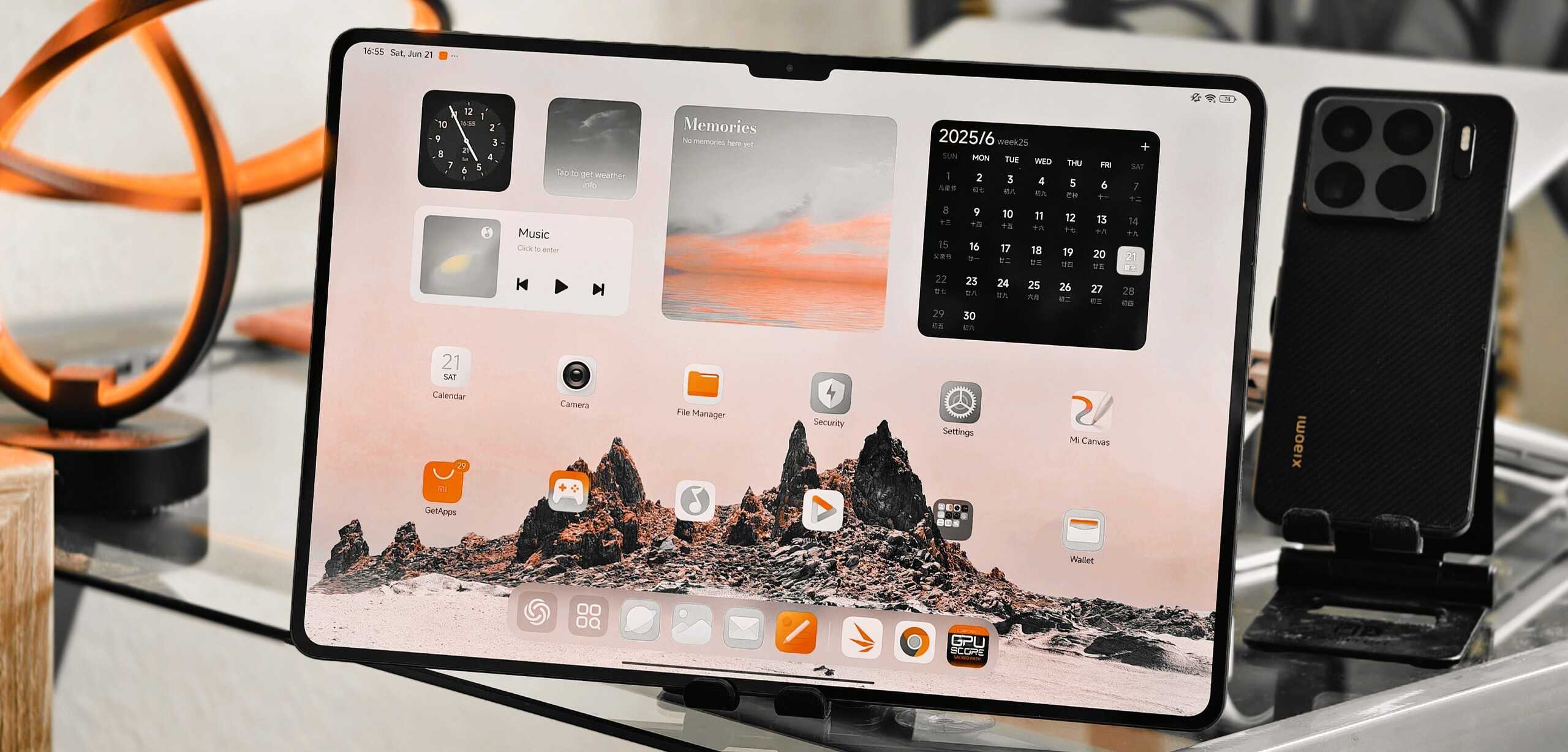

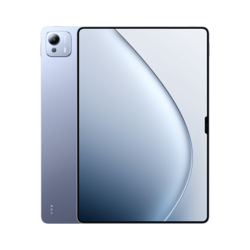
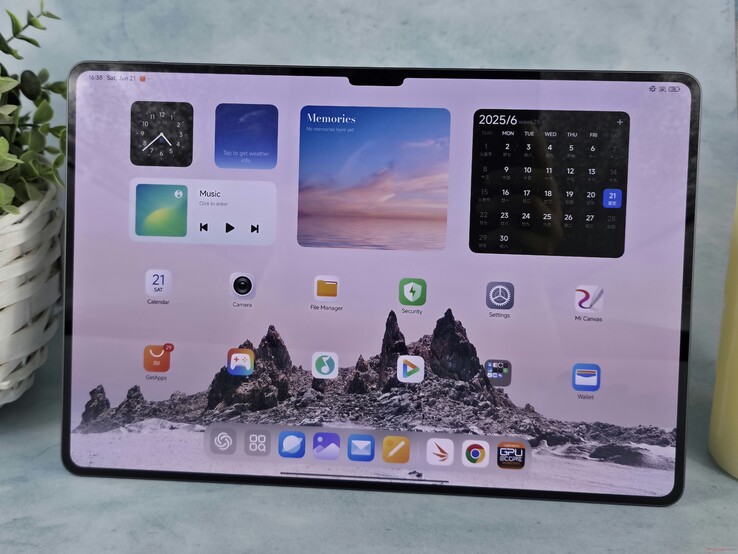






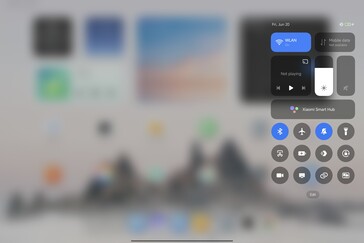
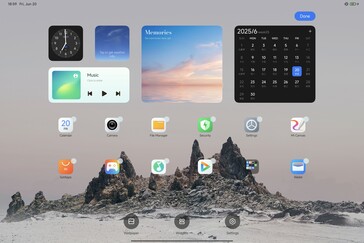
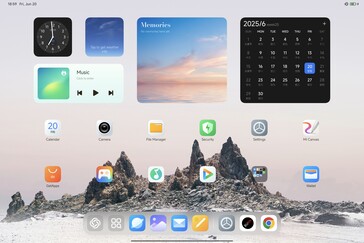
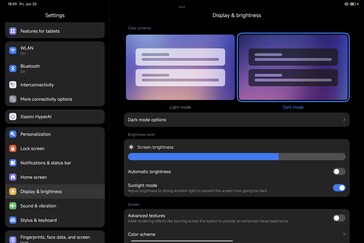






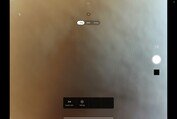
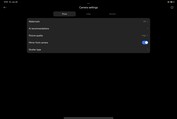







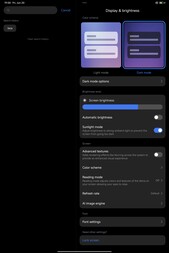
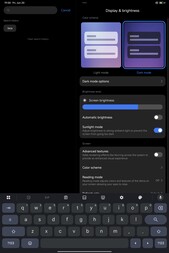
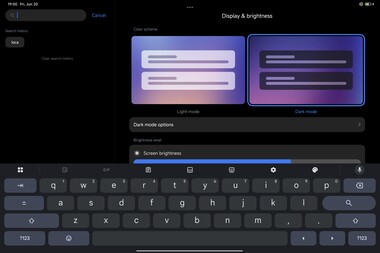
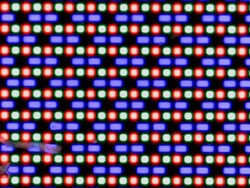
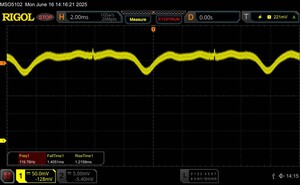





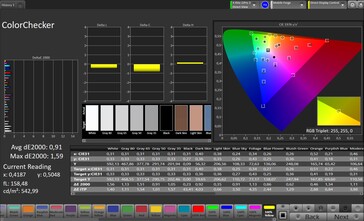
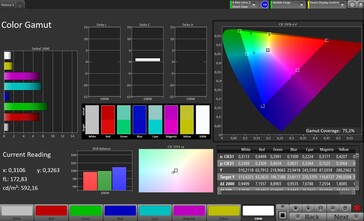



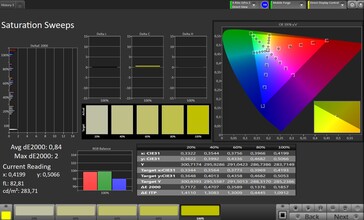



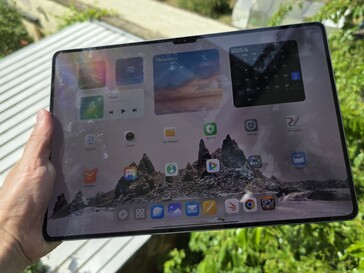





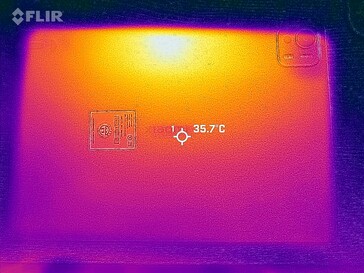
 Total Sustainability Score:
Total Sustainability Score: 





